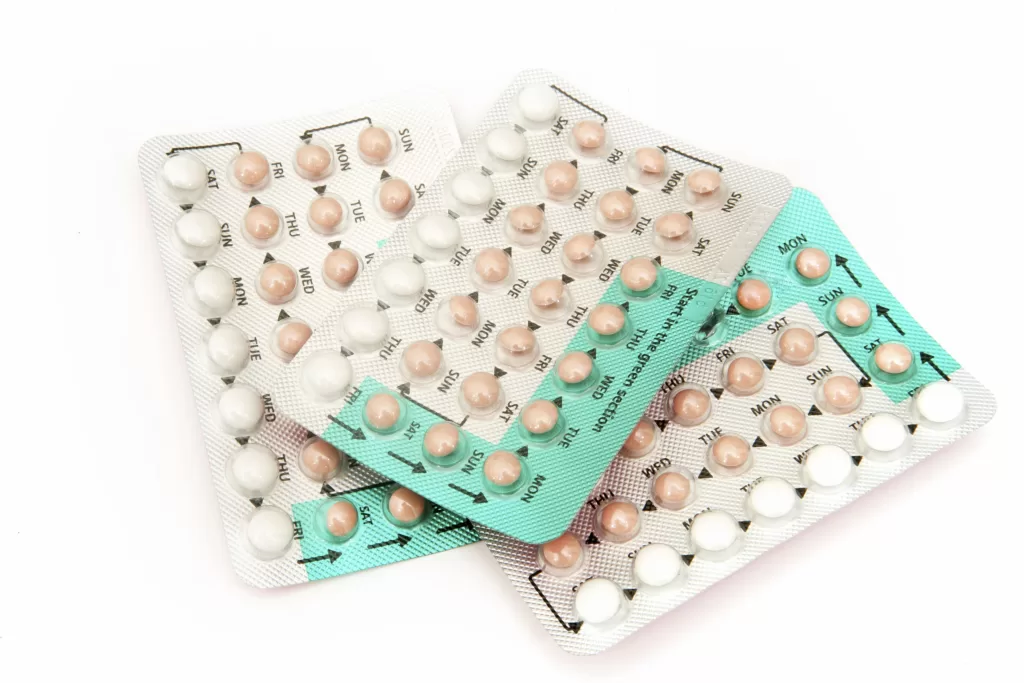The birth control pill is a widely recognized and commonly prescribed contraceptive option in the United States, serving as a reliable method for preventing pregnancy for countless individuals. This daily hormone-based medication primarily comes in two types: the combined oral contraceptive, which combines both estrogen and progestin, and the progestin-only pill, ideal for specific health considerations. Choosing the right birth control method can empower individuals to take control of their reproductive health, offering them flexibility and options to suit their lifestyles. With various types of birth control available—from IUDs to implants—understanding the differences between these contraceptive methods is essential for effective family planning. Consulting with a healthcare provider about these birth control options can significantly simplify the decision-making process, ensuring that you find the most suitable solution for your unique needs.
Often referred to as oral contraceptives, the birth control pill is a significant player among various contraceptive methods aimed at preventing unplanned pregnancies. These hormone-based medications provide flexible options for individuals seeking reliable reproductive control. Among the numerous birth control types, the combined oral contraceptive pill and the progestin-only pill stand out due to their distinct hormone compositions and functions. As discussions about contraception evolve, many are exploring different birth control methods to determine the best fit for their lifestyle and health. Engaging in a dialogue with a medical professional can illuminate the various contraceptive options available and help you make an informed choice.
Understanding Different Types of Birth Control
When exploring contraceptive options, it is crucial to understand the various types of birth control available. Options range widely from non-hormonal methods, such as condoms and diaphragms, to hormonal methods, including the birth control pill, implants, and patches. Each method has distinct mechanisms of action, effectiveness ratings, and suitability based on individual health conditions. For instance, hormonal methods may provide additional benefits such as reduced menstrual symptoms, while non-hormonal methods offer alternative options for those sensitive to hormones.
Discussing types of birth control with a healthcare provider can greatly aid in selecting the right method. Factors such as lifestyle, medical history, and family planning preferences come into play. For example, individuals with a history of blood clots may be advised to avoid certain hormonal options that carry increased risks. In contrast, methods like the copper IUD provide effective pregnancy prevention without hormones and can be ideal for those seeking long-term solutions.
The Birth Control Pill: A Popular Choice
The birth control pill remains one of the most widely prescribed contraceptive methods in the United States. This hormonal medication is taken daily and works primarily by preventing ovulation. The most common types of birth control pills are the combined oral contraceptive, which contains both estrogen and progestin, and the progestin-only pill. Healthcare professionals often recommend the pill for its high efficacy, ease of use, and additional benefits, such as regulating menstrual cycles and managing acne.
While the birth control pill is well-regarded for its effectiveness, it is essential to consult with a medical professional to discuss personal health conditions and lifestyle factors that may influence suitability. For instance, women who smoke or have a history of certain medical issues might be advised against the combined oral contraceptive. The progestin-only pill offers a suitable alternative without estrogen, making it a safer choice for breastfeeding mothers or those at risk for estrogen-related complications.
Mechanism of Action: How the Birth Control Pill Works
Understanding how the birth control pill works is essential for potential users. The combined oral contraceptive primarily prevents pregnancy through two main mechanisms: it suppresses ovulation and thickens cervical mucus. By stopping the brain from signaling the ovaries to release an egg, the risk of fertilization dramatically decreases. Additionally, the change in cervical mucus can create a barrier to sperm, further reducing the chances of pregnancy.
The progestin-only pill operates similarly but with some differences. While it mainly thickens cervical mucus to prevent sperm from entering the uterus, it may also inhibit ovulation in some users. However, this effect can be inconsistent, as studies show that a significant number of women may continue to ovulate while on the progestin-only pill. It’s vital for users to understand these differences as they affect the effectiveness of each method and the specific health conditions they may address.
Potential Side Effects of the Birth Control Pill
Like all medications, the birth control pill comes with potential side effects that users should consider. Common side effects include nausea, headaches, and mood changes, which can occur as the body adjusts to the hormonal changes. For the combined oral contraceptive, users may experience more substantial effects such as breast tenderness, weight gain, and in rare cases, an increased risk of blood clots.
On the other hand, the progestin-only pill can lead to different side effects, including irregular menstrual bleeding and acne. It’s important for individuals to consult with their healthcare provider to discuss any concerns about side effects before starting birth control. Healthcare professionals can help weigh the benefits against the potential risks to find a suitable method.
Comparing Hormonal and Non-Hormonal Birth Control Methods
When considering contraceptive options, one of the first distinctions to make is between hormonal and non-hormonal methods. Hormonal birth control, such as the birth control pill, rings, and injections, works by altering hormonal levels to prevent ovulation and create a less favorable environment for sperm. Non-hormonal options, like copper IUDs and condoms, avoid any hormonal intervention and provide contraception through physical barriers or other chemical means.
Each method provides various benefits and drawbacks. Hormonal methods often deliver additional health benefits, like decreased menstrual pain and acne control. In contrast, non-hormonal options do not interfere with hormonal balance and are often preferred by those who cannot or choose not to take hormones. It is crucial to discuss these options with a healthcare provider to identify the best method for individual health and lifestyle.
Long-Term vs. Short-Term Contraceptive Choices
Determining your contraceptive needs involves understanding the difference between long-term and short-term options. Long-term contraceptive methods, such as IUDs and implants, are designed for extended use, often lasting several years. These options are ideal for individuals who want reliable contraception without the need for daily management. Long-term methods can also be reversible, allowing for the quick return of fertility post-removal.
Short-term options, such as the birth control pill and condoms, are suitable for individuals who require more flexibility in family planning. They can be used on an as-needed basis, making them highly adaptable to changing life circumstances. Discussing your future family planning goals with a healthcare provider can help clarify which type of contraceptive method may be more appropriate based on your lifestyle and reproductive plans.
Exploring Emergency Contraceptive Options
Emergency contraception is a crucial aspect of contraceptive options, especially for those who may need a backup after unprotected intercourse. The most well-known method is the emergency contraceptive pill (ECP), which can be taken within 72 hours after intercourse to prevent pregnancy. While not a primary birth control method, ECPs provide an essential safety net for those who find themselves in unexpected situations.
In addition to ECPs, there are other methods such as the copper IUD, which can be inserted by a healthcare provider within five days after unprotected sex to prevent pregnancy. Understanding how these emergency contraceptive options work can empower individuals to make informed decisions about their sexual health. Discussing these options with a healthcare professional ensures that individuals are aware of all available methods in case of an emergency.
The Importance of Regular Check-Ups When Using Birth Control
Regular check-ups with a healthcare provider are vital for anyone using birth control, including the birth control pill. These visits allow for ongoing assessments of effectiveness, any side effects, and possible changes in personal health that may affect contraceptive choice. A healthcare professional can provide tailored advice and recommendations based on the most current medical guidelines and research.
Moreover, these appointments are an opportunity to discuss other contraceptive options that may become more suitable over time. If side effects occur or if personal circumstances change, such as a desire to conceive or a change in health status, a healthcare provider can recommend alternatives. Keeping open lines of communication with your healthcare provider allows for better reproductive health management.
Understanding Your Body and Birth Control Choices
It’s essential to understand your body when selecting a birth control method. Every person’s health situation, lifestyle, and reproductive goals are unique. The birth control pill may work well for one individual but not for another due to varying reactions to hormonal changes. Staying informed about how different methods function within the body can empower you to make educated choices about your contraception.
Tracking your menstrual cycle and understanding your reproductive health can provide valuable insights into your needs. Discussing these aspects with a healthcare provider can lead to selecting the most suitable contraceptive method. With a variety of options, including hormonal and non-hormonal methods, you have the power to choose what works best for your body.
Frequently Asked Questions
What is the birth control pill and how does it work?
The birth control pill is a daily hormonal medication used primarily by individuals with ovaries and a uterus to prevent pregnancy. It comes in two main types: the combined oral contraceptive pill, which contains estrogen and progestin, and the progestin-only pill. The combined pill works by inhibiting ovulation, thickening cervical mucus, and altering the uterine lining, while the progestin-only pill primarily thickens cervical mucus and may inconsistently inhibit ovulation.
What are the different types of birth control pills available?
There are two main types of birth control pills: the combined oral contraceptive pill, which contains both estrogen and progestin, and the progestin-only pill (minipill), which contains only progestin. Each type serves different needs and may be prescribed based on individual health conditions and preferences.
What are the main benefits of using the combined oral contraceptive pill?
The combined oral contraceptive pill offers several benefits, including effective prevention of pregnancy, regulation of menstrual cycles, reduction of menstrual cramps, and improvement of acne. These advantages make it a popular choice among many individuals seeking a reliable birth control method.
What potential side effects can occur with the progestin-only pill?
Potential side effects of the progestin-only pill may include irregular vaginal bleeding, headaches, nausea, breast tenderness, acne, and weight gain. While usually well-tolerated, some individuals may experience more pronounced side effects.
How effective is the birth control pill at preventing pregnancy?
When used correctly, the birth control pill is up to 99% effective at preventing pregnancy. However, typical use, which accounts for missed pills or incorrect usage, reduces its effectiveness to about 91%.
How do I choose between the combined oral contraceptive and the progestin-only pill?
Choosing between the combined oral contraceptive and the progestin-only pill depends on individual health factors, lifestyle, and preferences. The combined pill is often recommended unless contraindicated, while the progestin-only pill is typically prescribed for those who are breastfeeding, have certain health concerns, or prefer to avoid estrogen.
Can anyone use the birth control pill?
While many individuals can safely use the birth control pill, there are some medical conditions that might contraindicate its use, particularly the combined oral contraceptive. It’s essential to consult a healthcare provider to evaluate individual health histories and determine the most suitable contraceptive options.
What should I do if I miss a dose of my birth control pill?
If you miss a dose of your birth control pill, take it as soon as you remember. If you miss multiple doses, follow the instructions provided in the pill’s packaging regarding missed pills, and consider using backup contraception for a short period to ensure continued pregnancy prevention.
| Aspect | Combined Oral Contraceptive Pill | Progestin-Only Pill |
|---|---|---|
| Definition | Contains estrogen and progestin; most commonly prescribed oral contraceptive. | Contains only progestin; often referred to as the minipill. |
| Mechanism of Action | Prevents ovulation and thickens cervical mucus to prevent sperm function. | Primarily thickens cervical mucus, inconsistent ovulation inhibition; thins the endometrium. |
| Potential Side Effects | Tender breasts, nausea, headaches, spotting; serious risks include blood clots, stroke, heart attack. | Acne, breast tenderness, nausea, headaches, irregular bleeding, weight gain. |
Summary
The birth control pill is a widely recognized form of contraception that provides a reliable option for individuals seeking to prevent pregnancy. With its two primary types—combined oral contraceptive and progestin-only pills—users can choose a method that aligns best with their health needs and lifestyle. While considering the side effects and discussing options with a healthcare provider is essential, the birth control pill remains a popular choice among many due to its effectiveness and accessibility.
The content provided on this blog (e.g., symptom descriptions, health tips, or general advice) is for informational purposes only and is not a substitute for professional medical advice, diagnosis, or treatment. Always seek the guidance of your physician or other qualified healthcare provider with any questions you may have regarding a medical condition. Never disregard professional medical advice or delay seeking it because of something you have read on this website. If you believe you may have a medical emergency, call your doctor or emergency services immediately. Reliance on any information provided by this blog is solely at your own risk.






